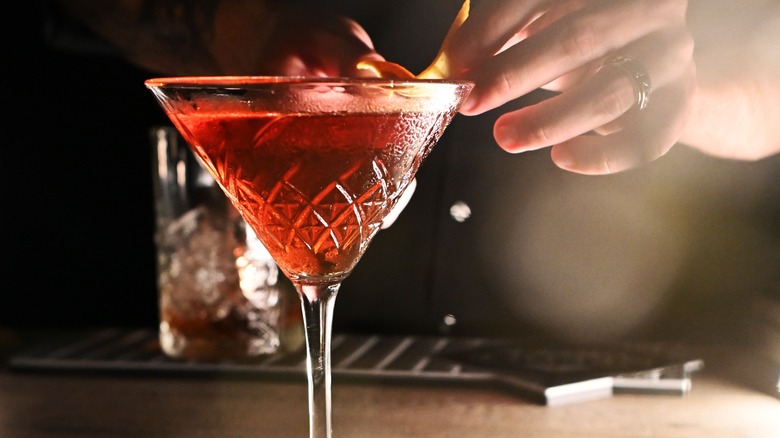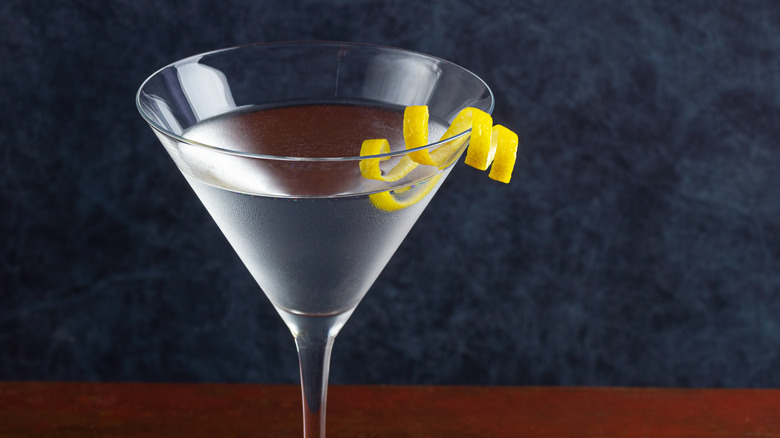What Is A Lion's Tail Cocktail And How Did It Get Its Name?
Looking for something bold and boozy to serve at happy hour? The Lion's Tail mixes bourbon with allspice and lime — a classic cocktail that's making a comeback. Bourbon gets shaken and chilled with allspice dram, fresh lime juice, simple syrup, Angostura bitters, and ice. Pour that into a coupe or martini glass. Then express the essential oils of an orange twist by rubbing it around the rim of the glass. The result is a honey-hued cocktail served straight up to kick off a good time.
So why the name? Possibly as a cheeky take from Americans to their friends across the pond. "Twisting the lion's tail" is old American slang to poke fun at the British by referencing their lion on the royal coat of arms.
The recipe didn't actually appear in print until the late thirties when a London publisher released "The Café Royal Cocktail Book." The original drink more likely comes from its colonial cousin as a popular beverage served at underground speakeasies in the United States during Prohibition in the Roaring Twenties.
Citrus peel adds complexity to cocktails
The Lion's Tail combines oaky bourbon with zesty lime juice, clove-like allspice, and spicy bitters. Opening the aromas of the orange peel adds a touch of sweetness to balance the bold bitterness of the drink. Swiping citrus peel on the rim might not seem like much. But they say the devil is in the details! Doing so adds a subtle touch that transforms an ordinary homemade drink into a mixologist's masterpiece. It's not just for looks; citrus peel adds complexity, brightening booze in its aroma and aftertaste. The rind contains essential oils that release through rimming and garnishing the glass.
Many other cocktail recipes call for citrus twists, too. Expressed lemon peel adds a bright sour note to the botanicals in a gin martini. The tart, cherry undertones of grapefruit peel help accent the bitterness of the Campari in a negroni. Lime peel highlights the juice in a gimlet, margarita, or mojito. Some bartenders take their craft to the next level by using a torch to flame citrus peels, caramelizing them and releasing their aromatic oils.
To make a twist, cut a ¼-inch curl using a Y-shaped vegetable peeler or paring knife. Rub the rim of the glass to open the aromatics in the oil. Toss it away or toss it in your drink as a garnish, pinched, twisted, or curled. Test the waters! Experiment with citrus peels to see how their essential oils elevate a drink in different ways.


